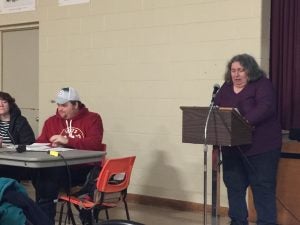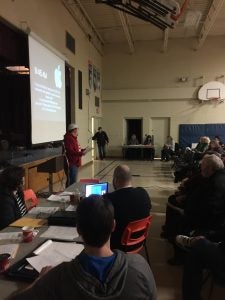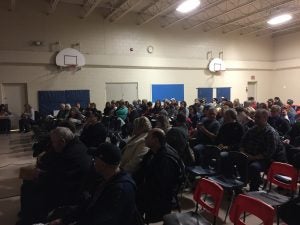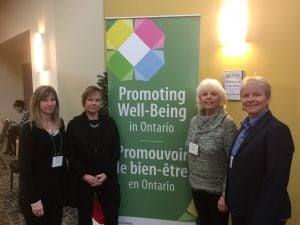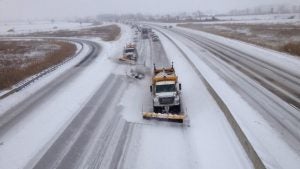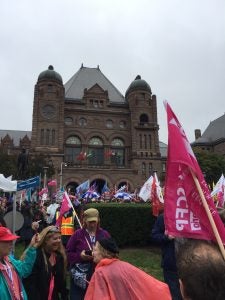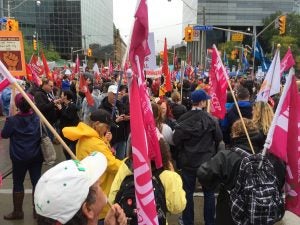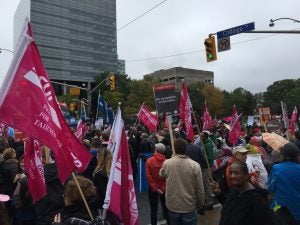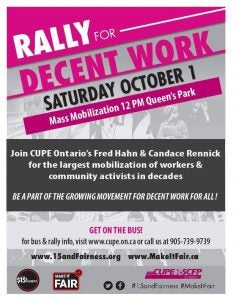More than 600 schools in the province are half empty. But can rural students get a good education without them?
Published on Dec 15, 2016 by Louise Brown
There are too many schools for too few students in Ontario — especially in northern and rural communities like Georgian Bay. (Adrian Wylde/CP)
Suddenly school closings are in the news again — the return of a political nightmare.
Fifteen years after sweeping closures of half-empty schools sparked protest at Queen’s Park (resulting in a moratorium on further shutdowns), it’s happening again. In far-flung towns across the north and east of the province, where populations are shrinking, local boards will decide the fate of dozens of under-enrolled schools.
If the schools go, many fear, so will the heart of small-town Ontario. That’s not just the cry of families fearing change: of those local institutions that engender a sense of community (post office, recreation centre, library), it’s schools that do the most heavy lifting, according to sociologist T.A. Lyson’s 2002 report, “What Does a School Mean to a Community?” Among 350 rural villages in New York State, Lyson found those that had lost their schools were less likely to see population growth, were less likely to attract middle-class families, and experienced higher rates of poverty.
“On virtually every indicator of social and economic well-being, larger rural communities with schools ranked higher than communities without schools,” he said.
Still, there are too many schools for too few students in Ontario, especially in northern and rural communities.
“When you shut down a school, a community dies,” said David Thompson, chair of the Near North District School Board. “Education is one of the main legs of a town’s economy.” The board’s elected trustees must decide whether to merge six schools down to two in North Bay next year. With 10,000 students spread across 17,000 square kilometres from Mattawa to Parry Sound, Near North’s 35 schools average 64 per cent enrolment. Some of those schools are tiny: Argyle Public School, in Port Loring, has just 55 students from kindergarten to Grade 8. If it were to close, the nearest alternative would be 74 kilometres away.
“You close down a school in a small town and kids suddenly spend hours on the bus going to other communities,” said Thompson, noting that long commutes leave little time for students to engage in extra-curricular activities. (At Amalguin Highlands Secondary School, in South River, the board rents buses two nights a week to bring kids back to school for extra-curriculars.)
“I’m tired of people from the south saying, ‘Well, you choose to live there.’ Yes, we live here, and our kids deserve equity in education.”
So what’s happened?
Follow the money, and you’ll see that the extra “top-up” funding the Liberals have long granted school boards to soften the blow of declining enrolment is coming to an end, as the province works to wipe out its deficit by 2018. For the first time in more than a decade, local trustees have to budget without that net. Because two-thirds of education funding is based on enrolment, this is especially hard on small and under-enrolled schools: they still have to heat the same building and pay the same staff, but with less money.
And enrolment continues to plummet. In 2015, Ontario had 140,000 fewer students than it did in 2002, according to the advocacy group People for Education. Not surprisingly, the loss was greater in the north, which has seen its population shrink along with the resource sector. In 2012, the average elementary school had just 177 students, compared with 405 in the Greater Toronto Area. Nearly 600 schools in Ontario were half empty; the province says it’s spending $250 million a year on vacant space.
There’s also growing competition for students between the four public school systems — English public, English Catholic, French public, and French Catholic. “We have fewer students coming to our board, partly because of the growing demand for French-language education,” says trustee David McDonald of the Upper Canada District School Board, which could shut down as many as 29 facilities over the next two years.
“Fifty years ago we didn’t have publicly funded Catholic high schools or the French-language school boards to compete with,” he says, “but now a student has four choices, often in pretty small communities.”
Yet there are also examples of boards joining forces to serve the shrinking student body, sometimes by sharing space. Education minister Mitzie Hunter praised Near North for teaming up with its French-language counterpart in Sturgeon Falls, one of the small towns where they both run schools. “This partnership involves the Near North board leasing out a portion of its Northern Secondary School to École Secondaire Publique Northern,” Hunter said in an email. “The boards currently share a library, gym and cafeteria.”
In the government’s defence, Hunter notes that since 2012, Queen’s Park has increased funding for rural schools by 5.7 per cent. It has provided $750 million to help ease the closing process and another $14 billion for 760 new schools and 735 additions across Ontario.
Still, the end of the province’s top-up funding — to be phased out over three years — is a major blow to small and rural schools already unable to afford the pricey extras their urban counterparts enjoy, such as libraries and guidance counsellors. (Only 44 per cent of schools in rural areas have a librarian, compared with 60 per cent in cities.) These schools are also half as likely to employ specially trained gym and music teachers, or to have access to social workers, according to People for Education.
The government contends that by closing half-empty buildings and creating schools with greater enrolment figures, there will be more money to give rural students the programs and supports their urban peers have.
But small towns without schools are less appealing to young families, warns Annie Kidder, executive director of People for Education: “This raises the question of our vision for the province. What do we want Ontario to look like? It’s happening all across the country as small towns lose their post office, then their court house, and then their school.”
Kidder says Ontario could update the enrolment averages it uses in its funding formula so schools aren’t as harshly penalized for being under-enrolled. They could also consider keeping local schools open by bringing in other public agencies to create community hubs: “We could get better at planning together when we’re opening or closing a public building, to look at how we can share space and services.”
But for now, Kidder says boards are “caught between a rock and a hard place. They have communities begging, ‘Don’t close our school!’ and government saying, ‘Get to work consolidating your space.’
“How do you have a balance between closing the schools that should close, and the impact that has on small communities? We have to be thinking of the quality of our whole society.”
Louise Brown covered education for the Toronto Star for nearly 30 years.
